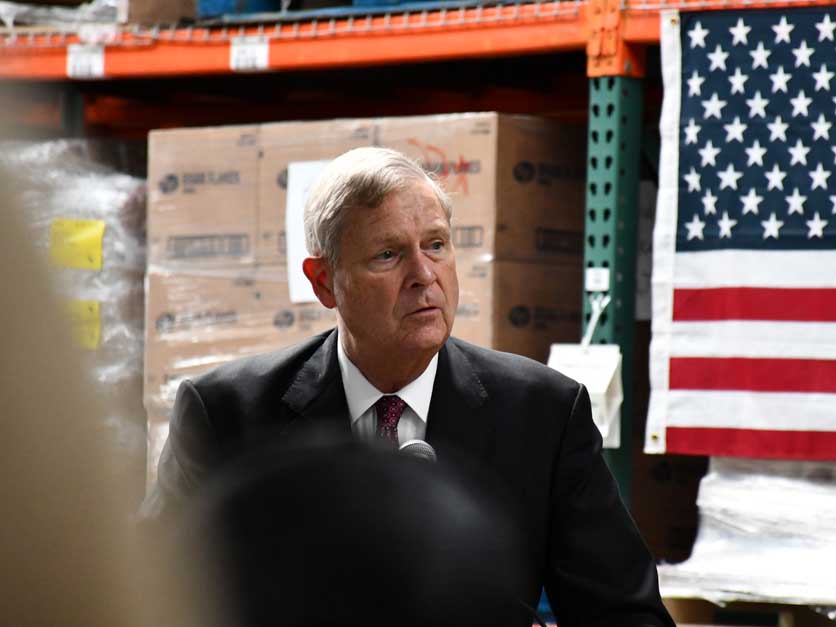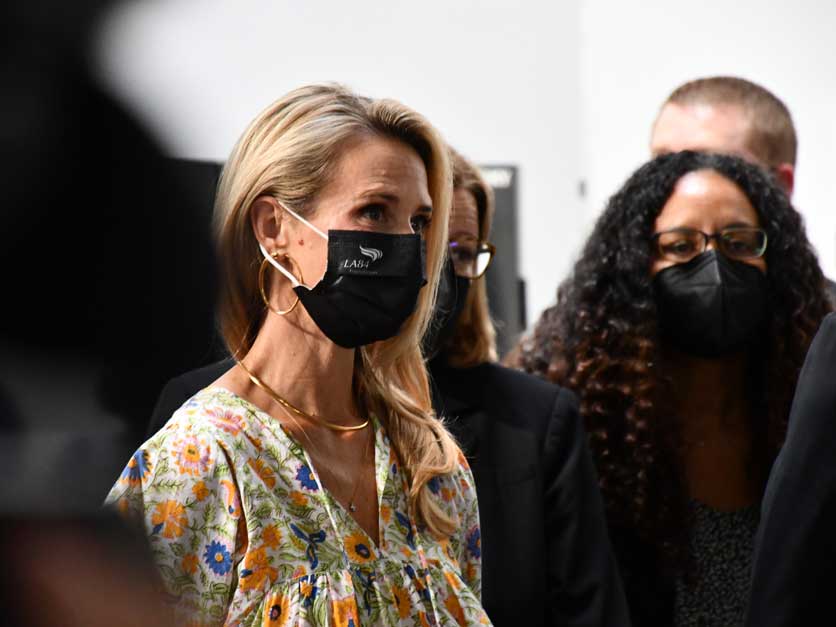California is the latest state to benefit from a $400 million federal spending package for procuring locally sourced products for food banks, receiving a $43 million investment—the largest to date.
Agriculture Secretary Tom Vilsack traveled to the Yolo County Food Bank last week to announce the new spending agreement with California under the Local Food Purchase Assistance Cooperative Agreement Program within USDA’s Agricultural Marketing Service. With more than 12,000 Californians relying on the food bank, Yolo County has the highest level of poverty in the state as well as what Vilsack praised as a strong community response to the overwhelming need.
“This is just part of a much larger effort—as we emerge from the pandemic, as we emerge from this period of disruption—to transform our food system,” said Vilsack on the new spending. “Every time America has faced a troubled time, a time of great disruption, we have always emerged stronger, better, smarter, more innovative. That’s true today.”
Linking small and underserved farmers to food banks, schools and other markets creates a more resilient food system, according to Vilsack, who noted that the Yolo facility is also taking part in USDA’s regional resiliency program. That will help the food bank access more equipment and storage facilities to house more food for distribution and for finding creative ways to reach rural residents. USDA awarded California $5 million for 19 projects in that program.
 Agriculture Secretary Tom Vilsack
Agriculture Secretary Tom Vilsack
All of the funding stems from the Keep Kids Fed Act that Congress passed last month, which allocates $2 billion to support food banks and schools in purchasing more local products. Long after the onset of the pandemic, food banks are still experiencing heavy traffic as grocery prices spike.
Kim Johnson, who directs the California Department of Social Services, praised the $43 million investment, saying it supports the goal of reducing or eliminating food insecurity statewide. The money will go to 54 food banks and community-based organizations and support about 250,000 families in need.
“The investment will also support local and socially disadvantaged farmers and other food producers, strengthening California's food systems and agricultural supply chain,” said Johnson.
The recently signed state budget expanded funding for the California's food banks program, known as CalFood, from $8 million to $120 million, with another $60 million coming next year.
“We are supporting local economies and we're building stronger, more resilient communities that are coming together to do the most important and most noble cause that I know of,” said CDFA Secretary Karen Ross. “And that's what a farmer does every day: grow food for people.”
CDFA has been working with the California Association of Food Banks for more than 15 years on its Farm to Family program, with a focus on adding more nutrition in the food box. The Newsom administration scaled up the funding in 2020 as the pandemic shuttered markets for farmers and the need soared. Yet California’s small-scale specialty crop growers remained frustrated over a perceived lack of inclusion in the state and federal aid programs.
Don’t miss a beat! It’s easy to sign up for a FREE month of Agri-Pulse news! For the latest on what’s happening in Washington, D.C. and around the country in agriculture, just click here.
That is why Hope Sippola, who runs a two-acre urban farm in West Sacramento, praised USDA’s new farm-to-food bank spending. Through a CDFA grant, Sippola and her partner started the Spork Food Hub to connect small, underserved growers and farmers of color to valuable and stable wholesale markets. Groups representing small family farmers were just as excited about the new funding resources.
 First Partner Jennifer Siebel Newsom (left) and Social Services Director Kim Johnson
First Partner Jennifer Siebel Newsom (left) and Social Services Director Kim Johnson
Vilsack stressed the importance of USDA significantly expanding opportunities like this that enable farmers to profit, noting a recent USDA Economic Research Service statistic that about 89% of the nation’s farmers rely on an outside income to balance their bank accounts.
The agriculture secretary promised substantially more investments will roll out over the coming months. Topping his list of priorities were programs for encouraging more organic agriculture through incentives for mentoring new organic producers, money for developing organic markets and support for the transition from conventional farming. USDA will offer additional dollars to establish and strengthen regional food hubs, along with technical assistance and access to financial resources. California’s tree nut and dairy processors will benefit from other grants, along with meat and poultry processors.
Vilsack noted that First Partner Jennifer Siebel Newsom, who toured the food bank alongside the state and federal officials, has been interested in more funding for farm-to-school programs, and USDA recently announced $10 million for 123 such projects.
Vilsack was eager to counter the dire situation surrounding drought and inflation with some positive news about money to help these businesses.
“There is more coming, folks,” he pledged.
For more news, go to www.Agri-Pulse.com.


